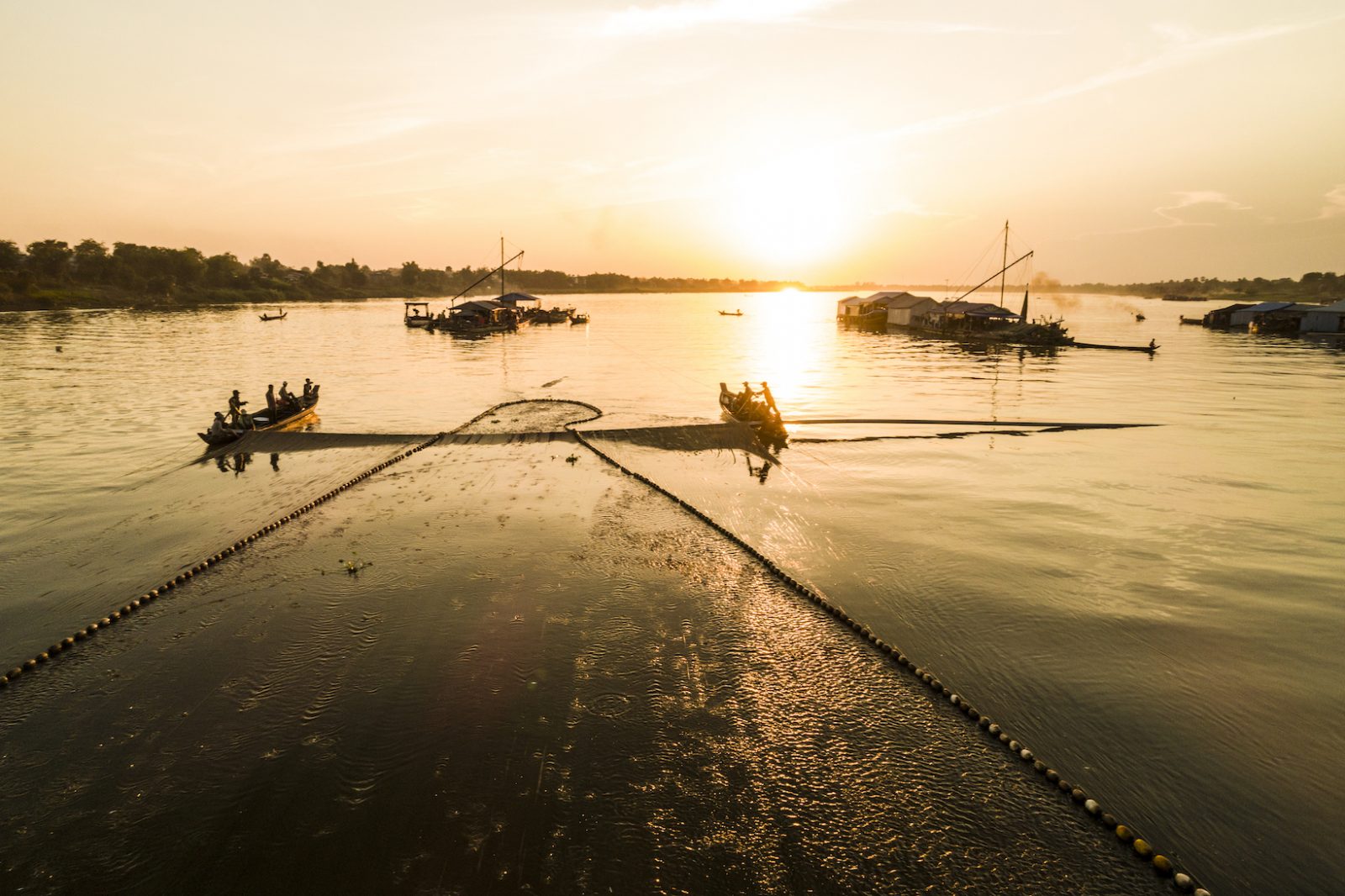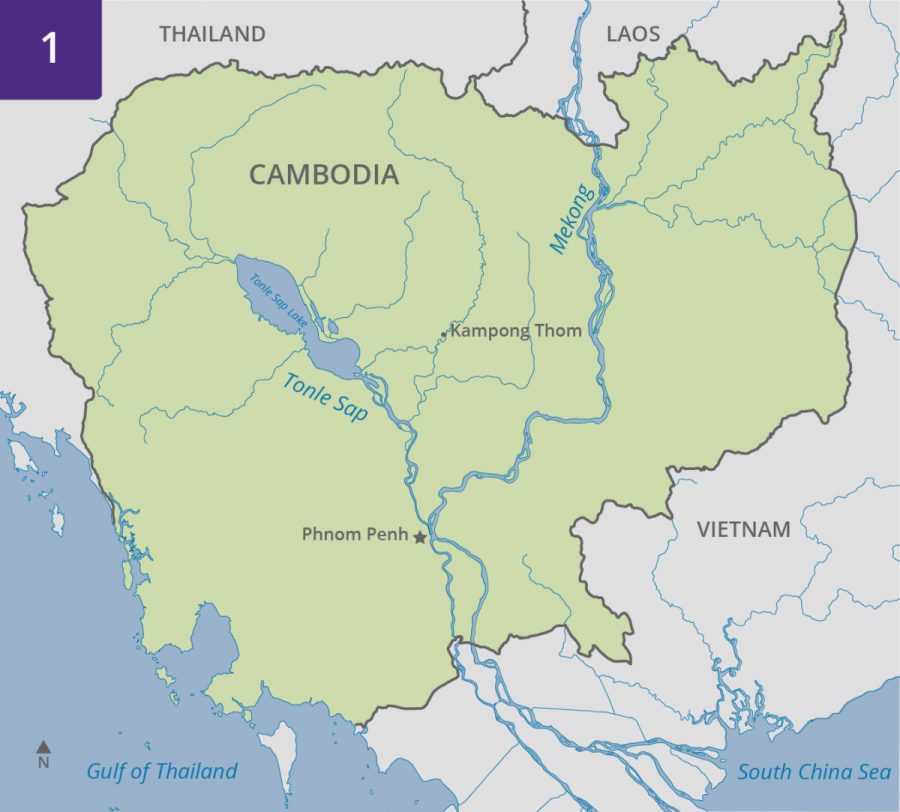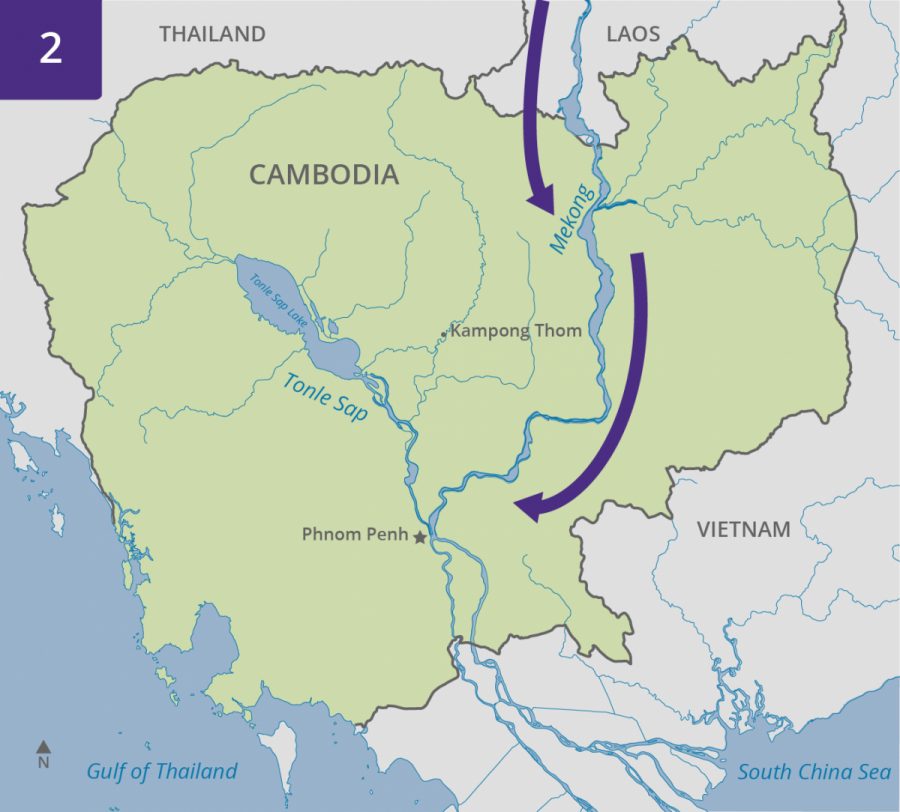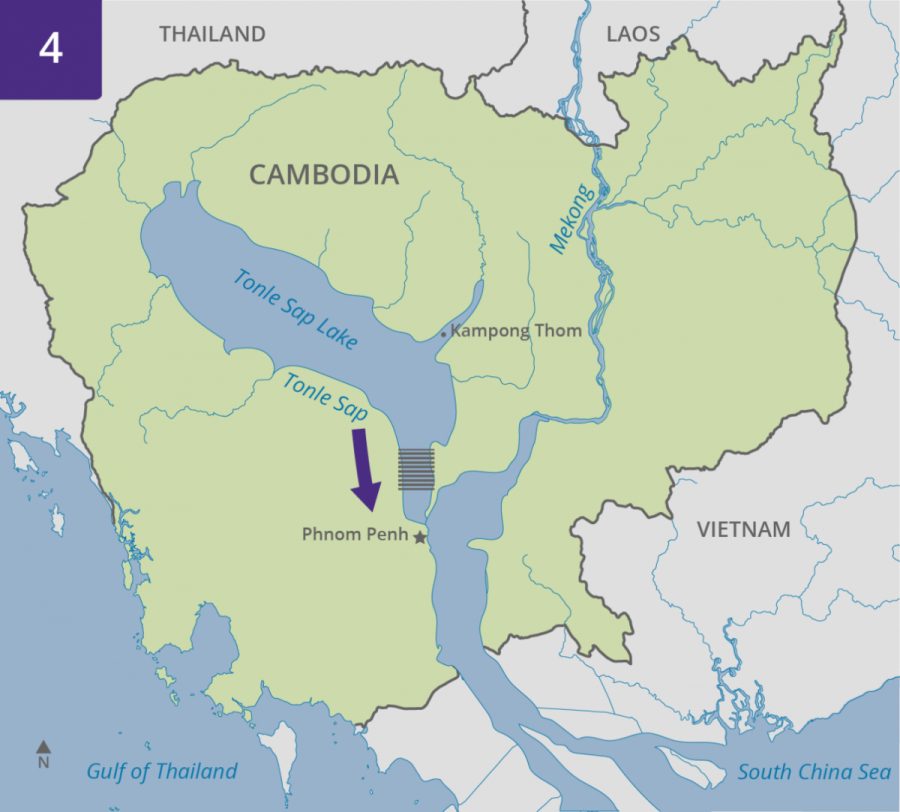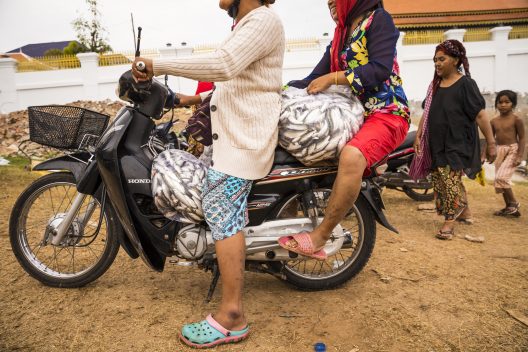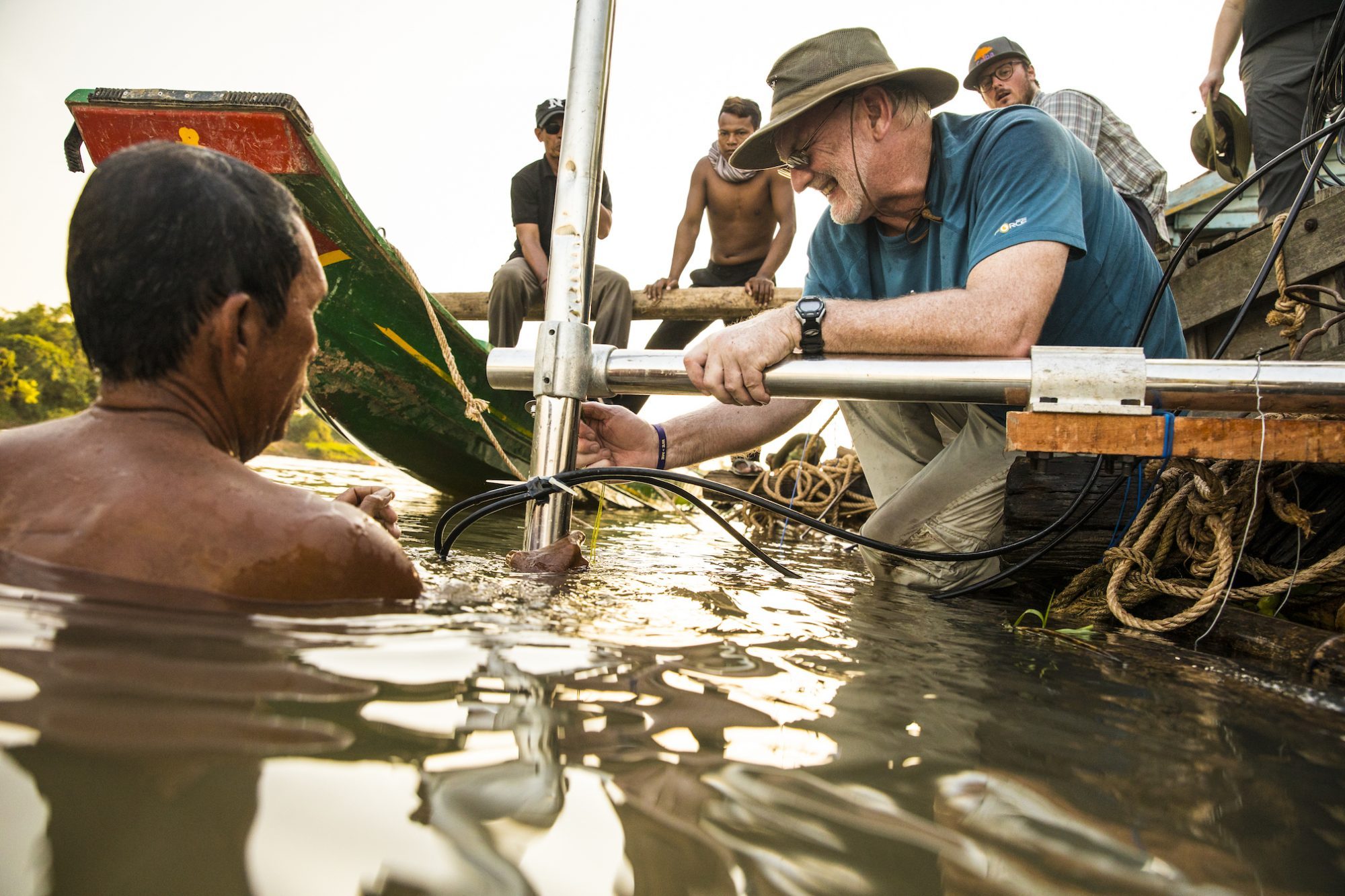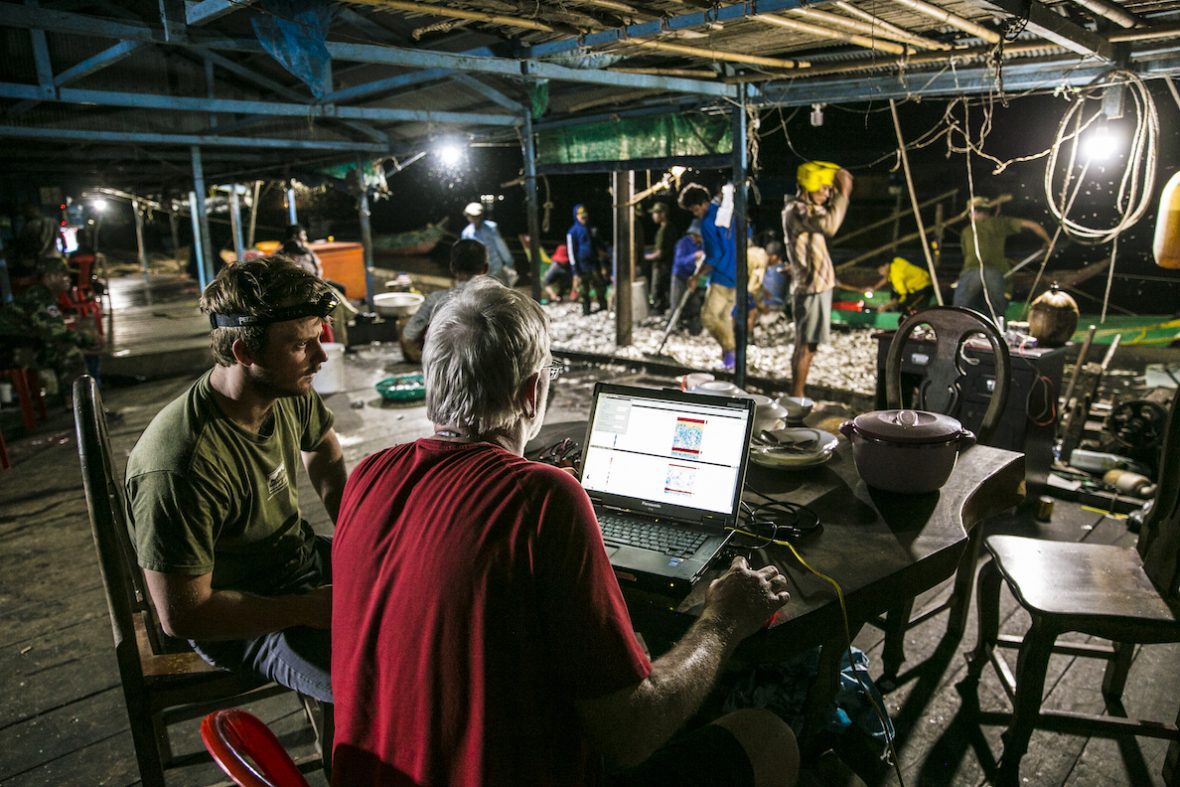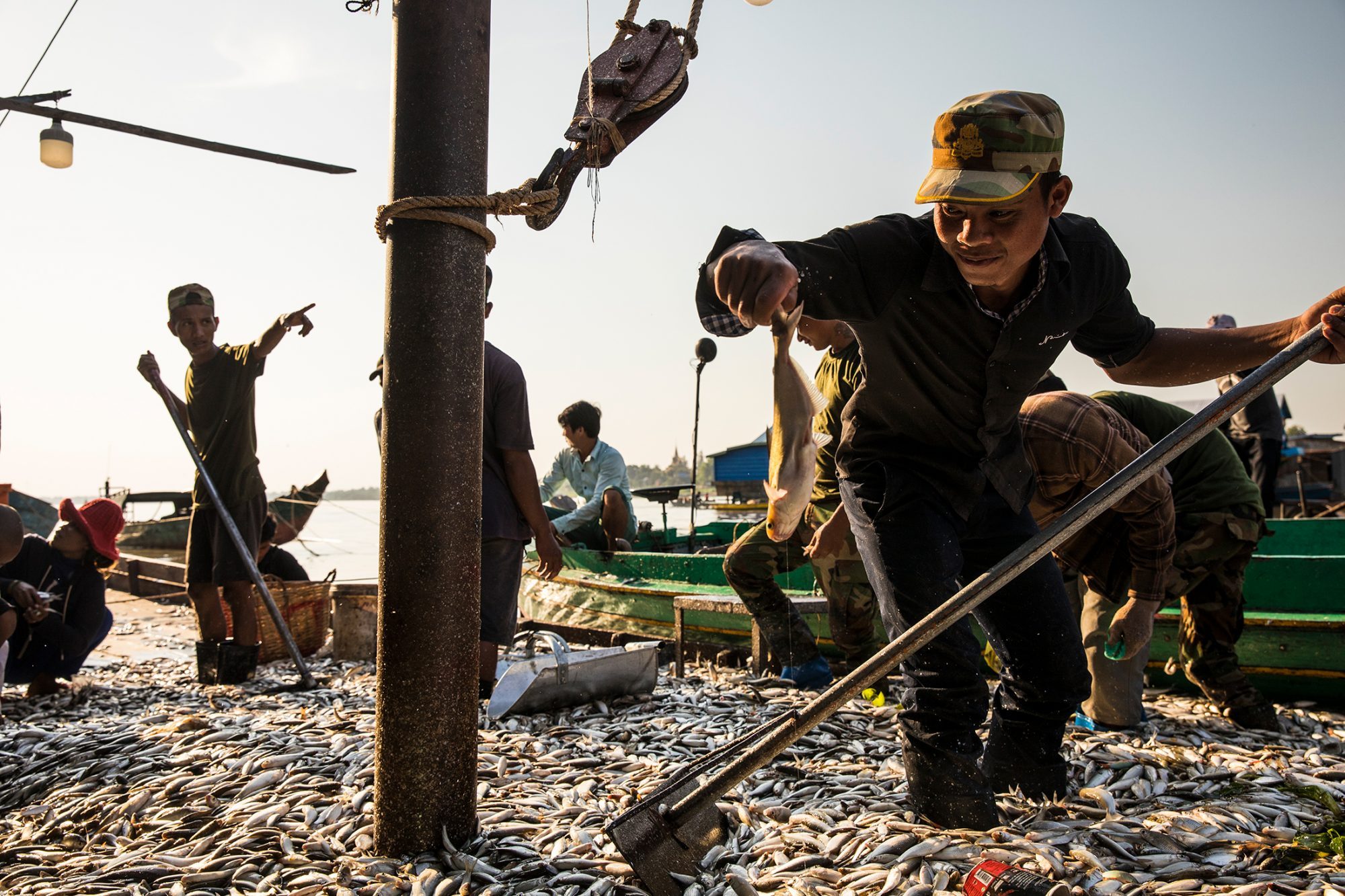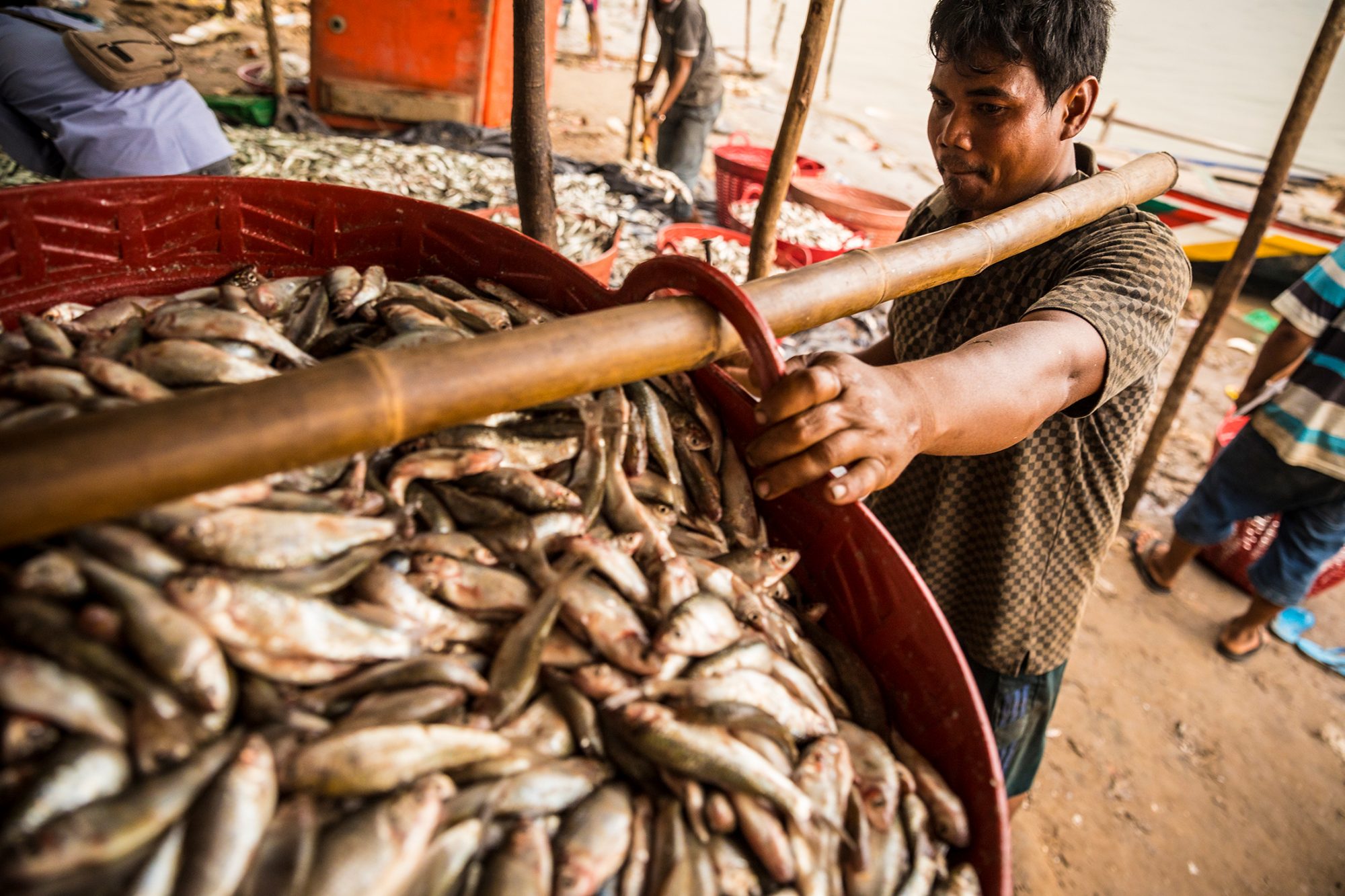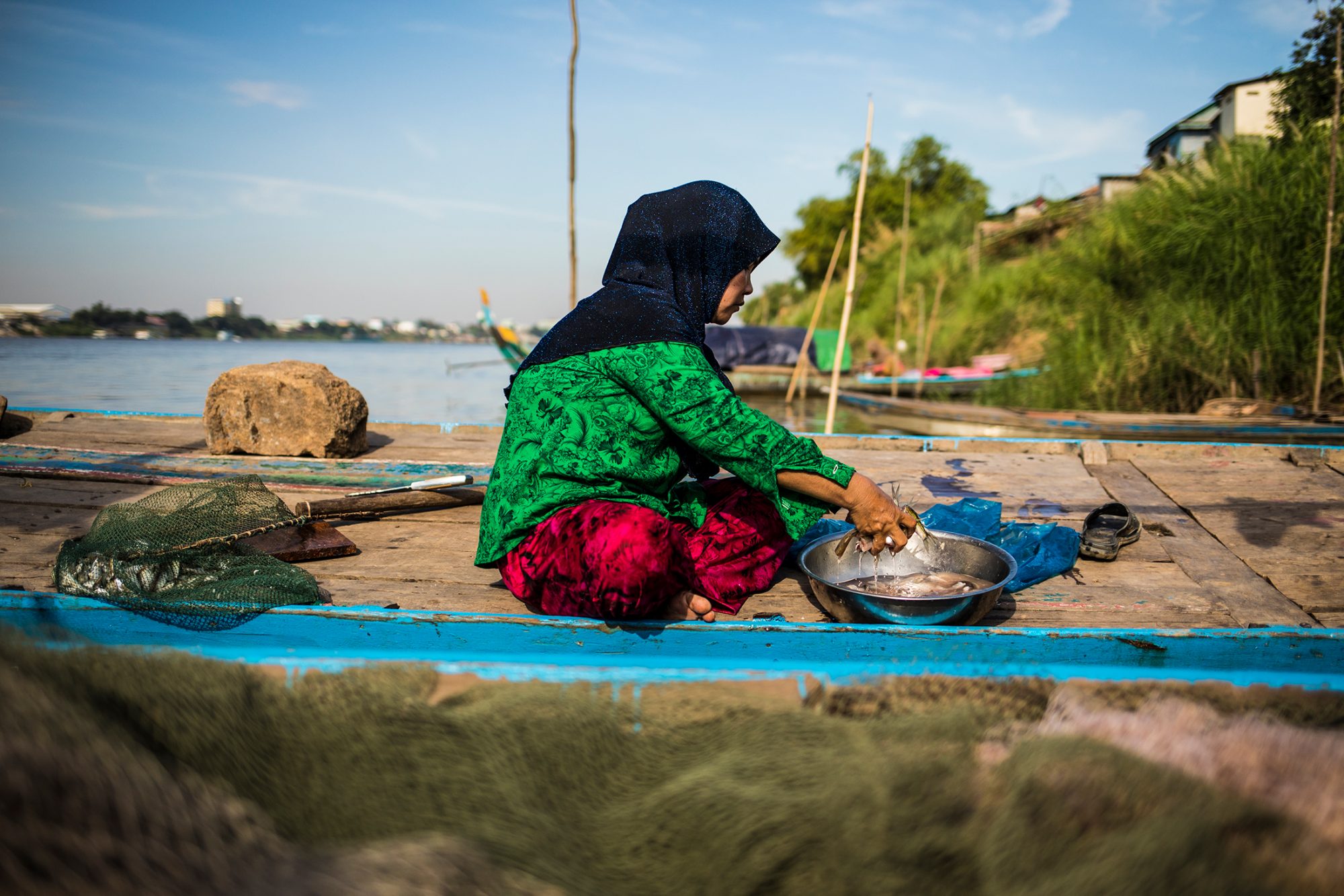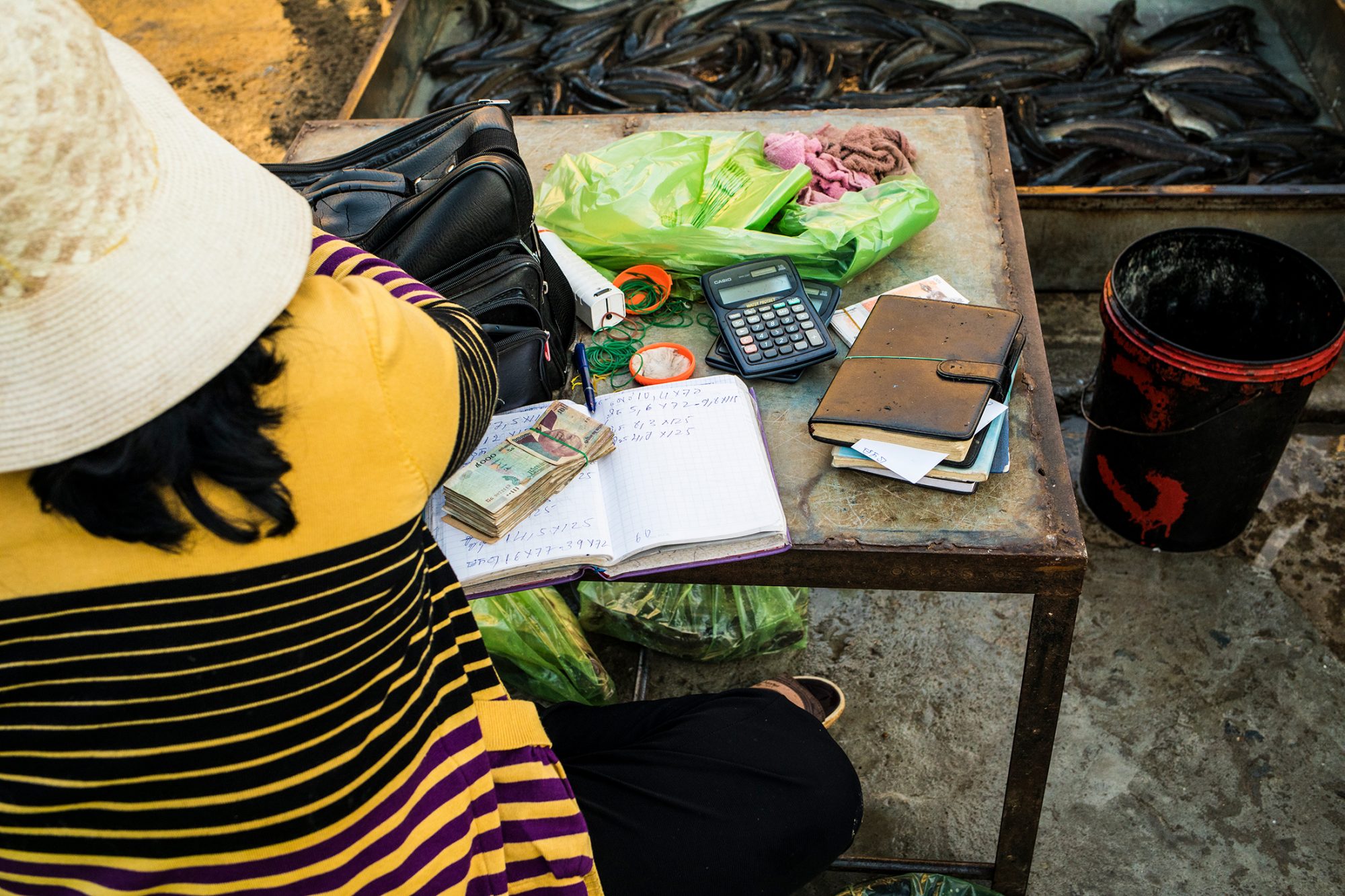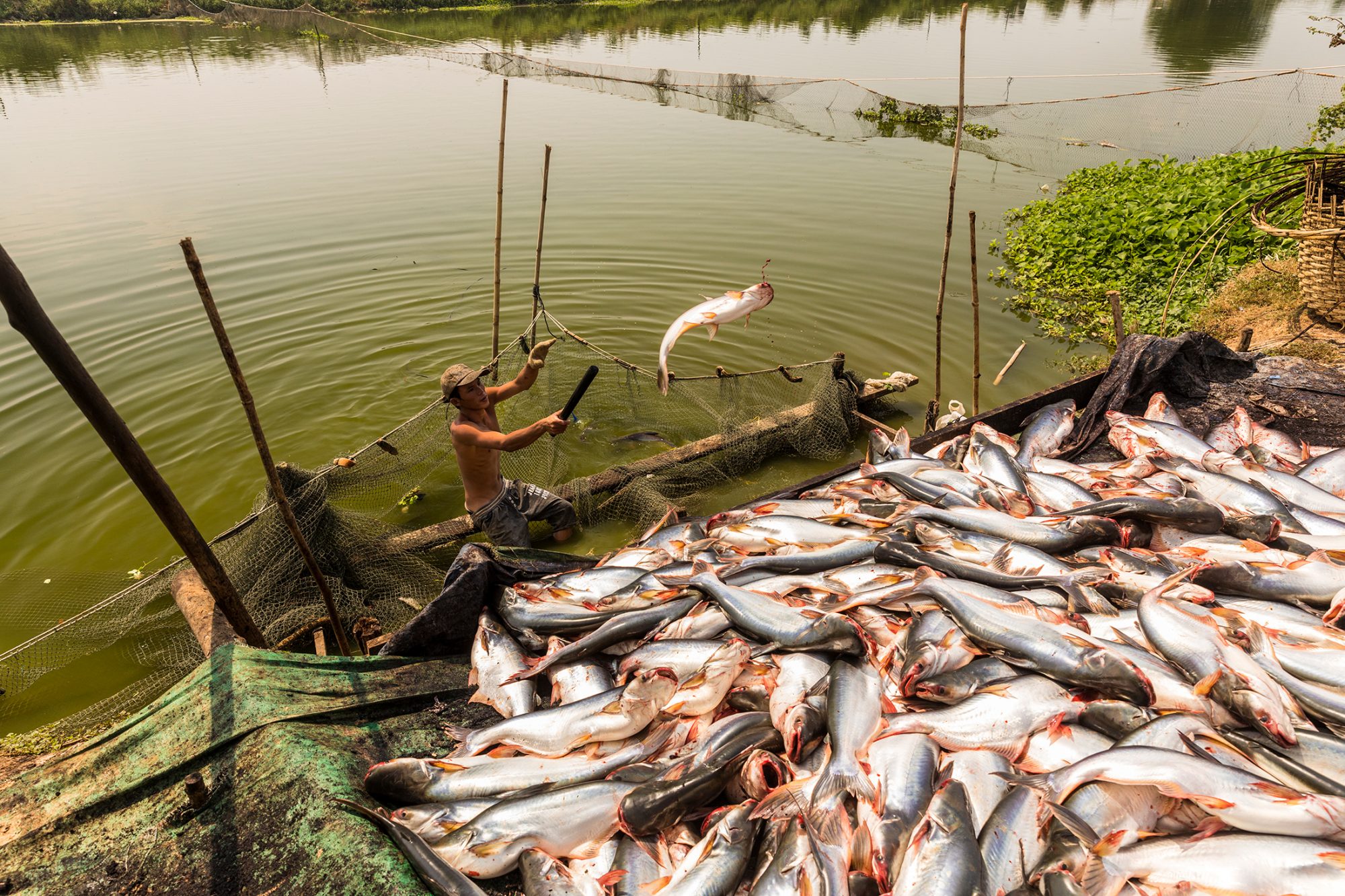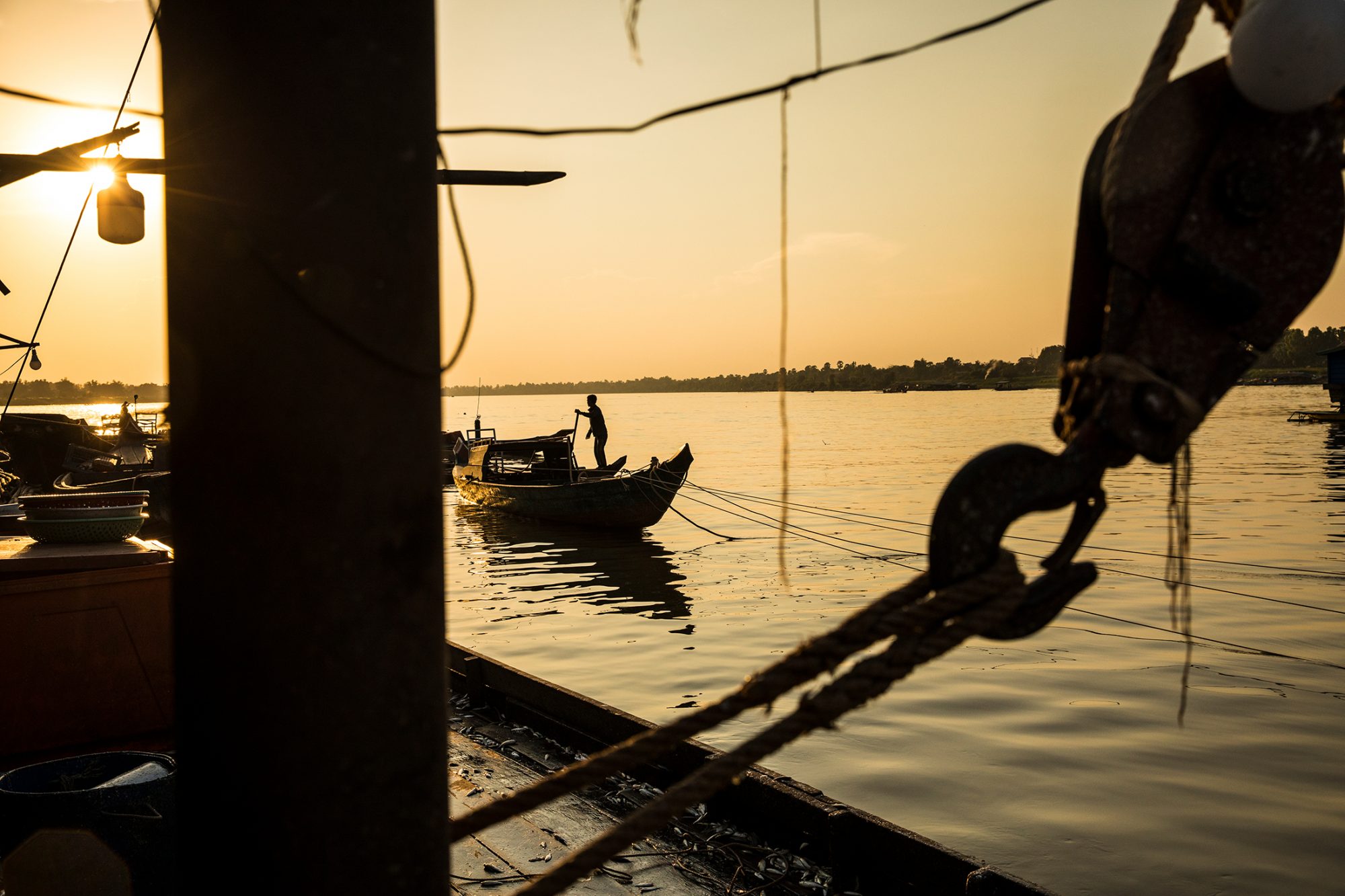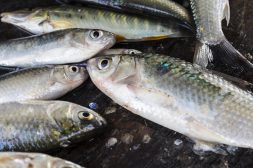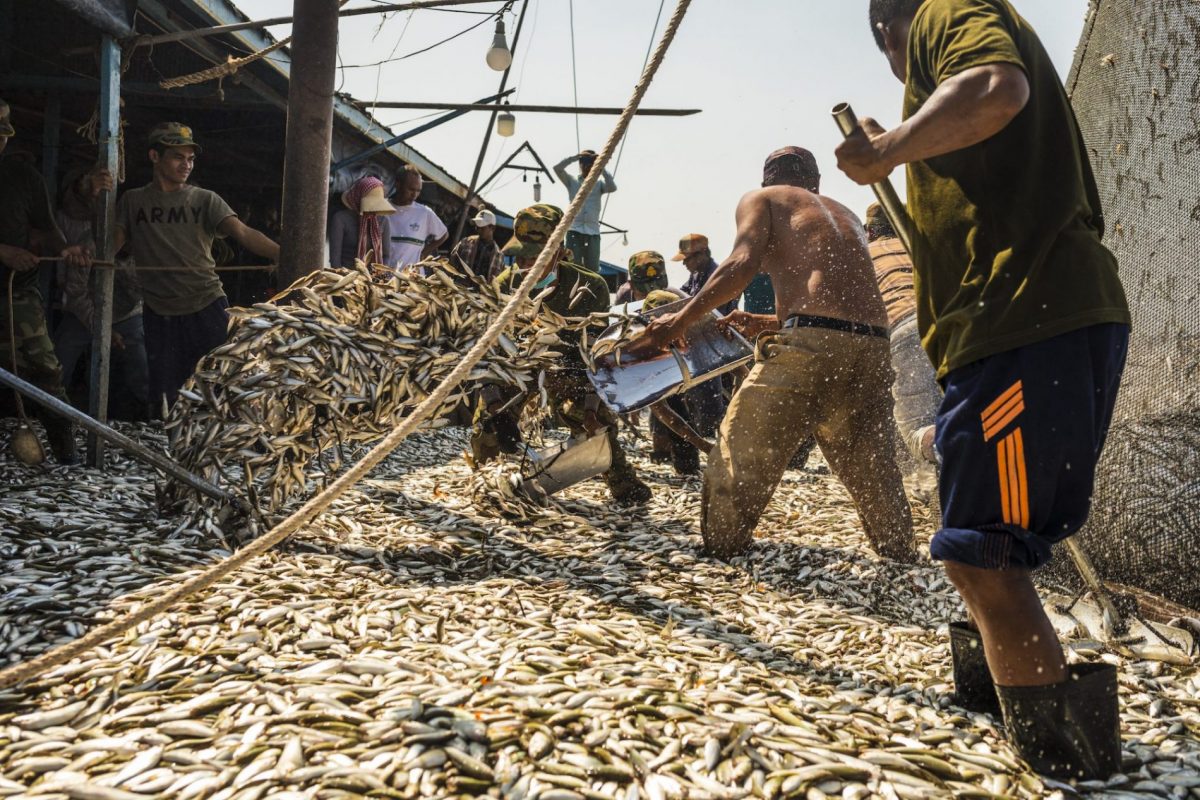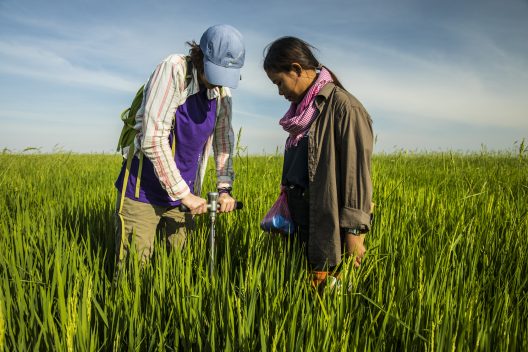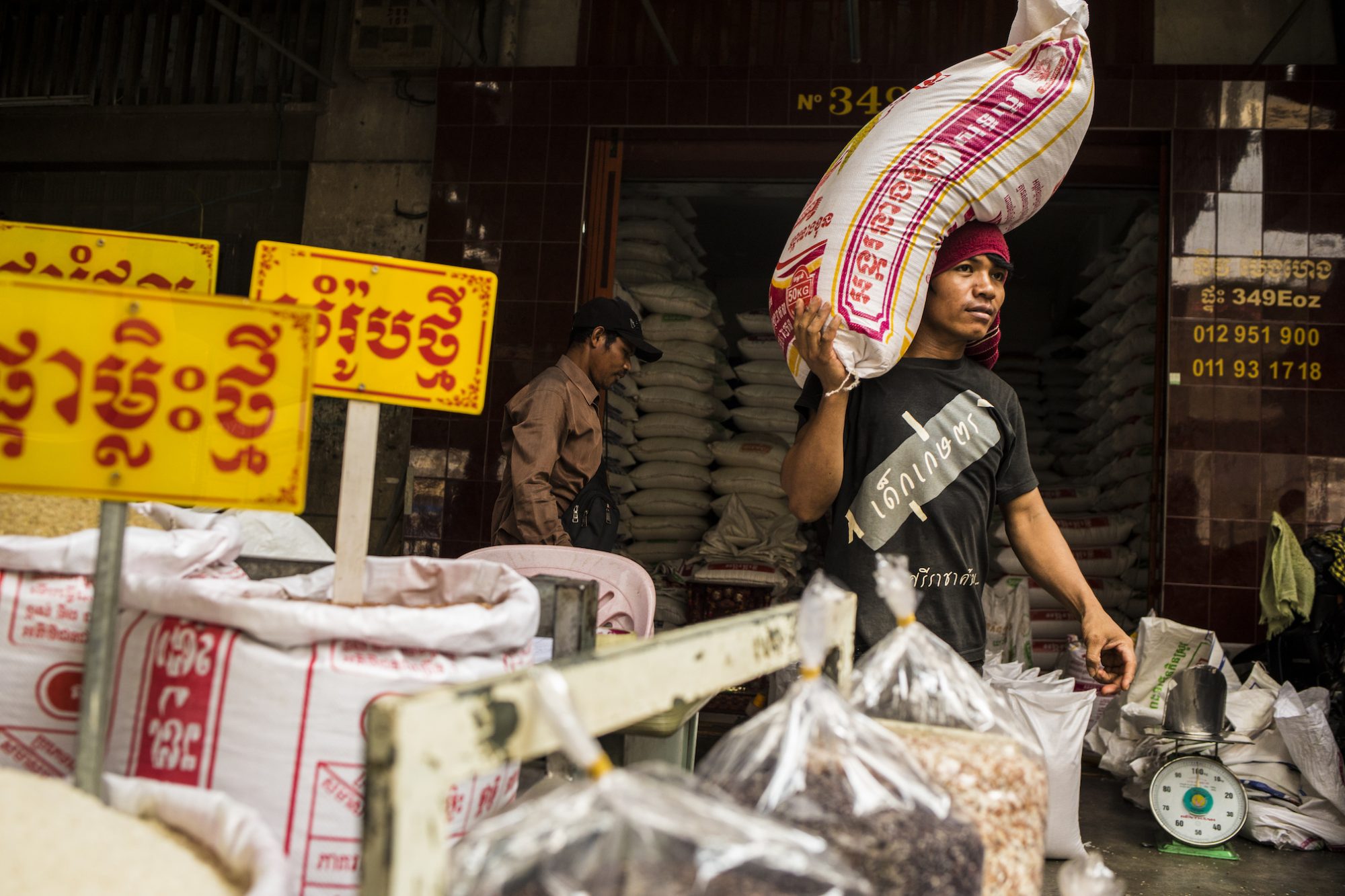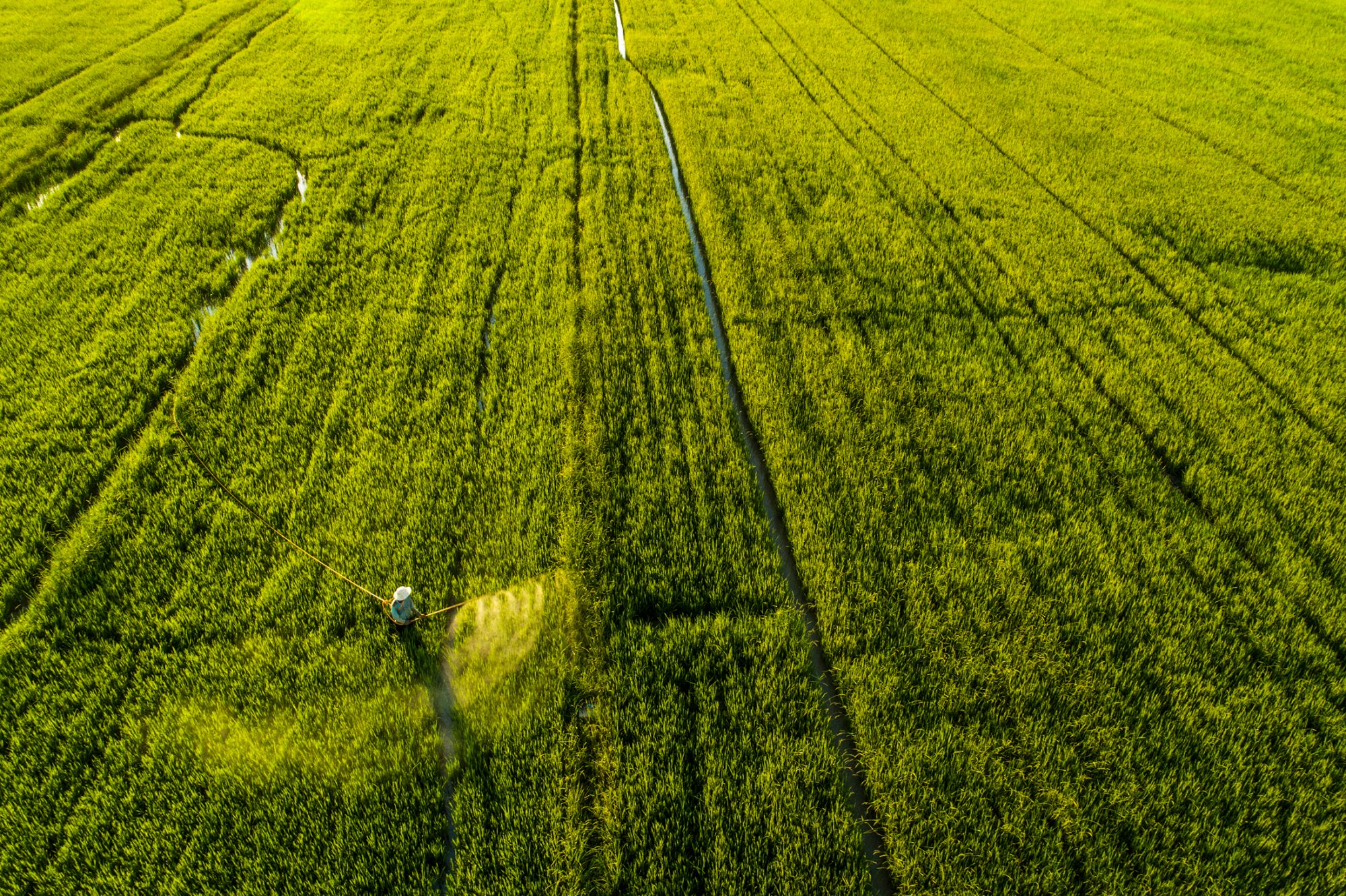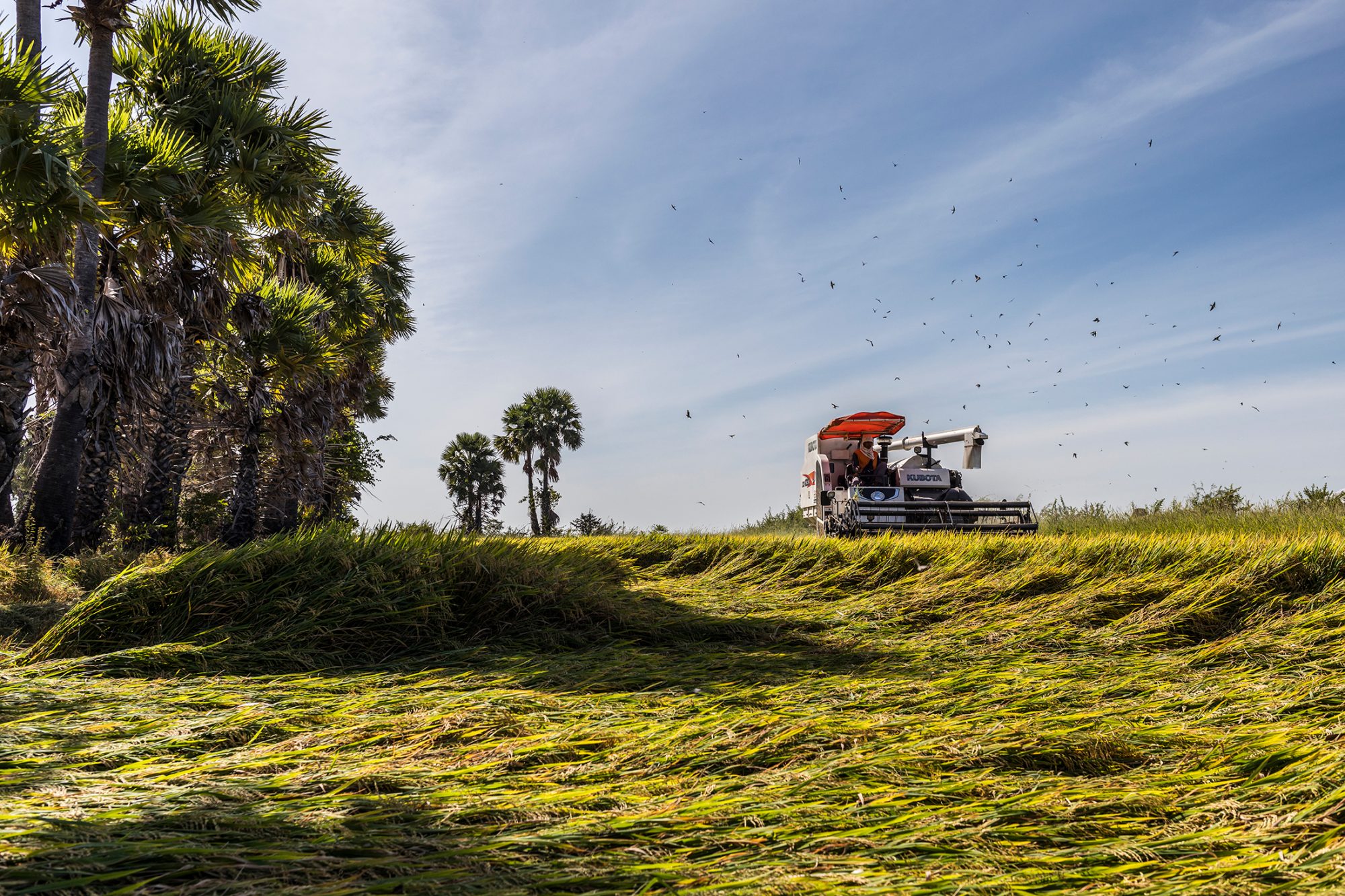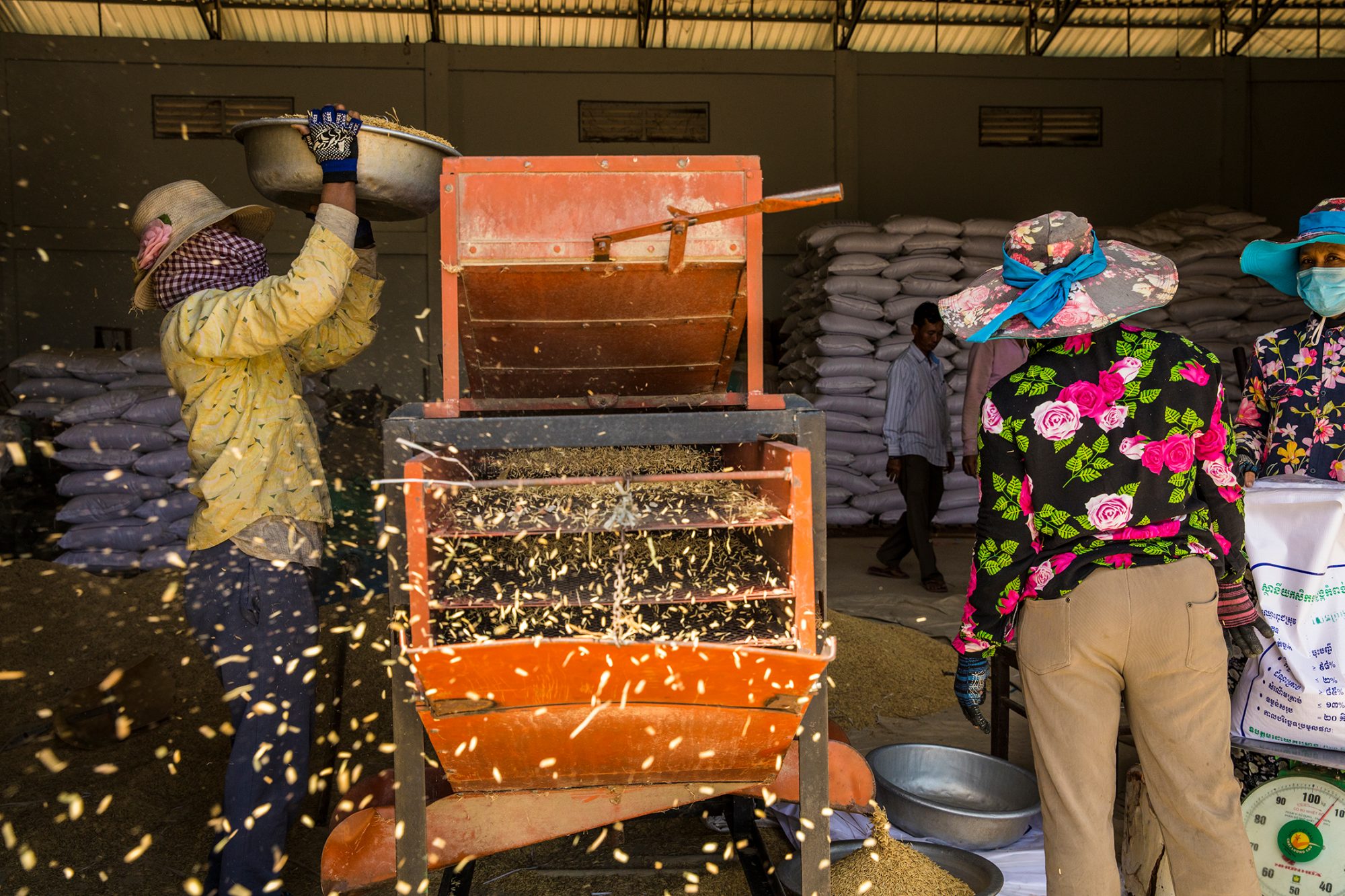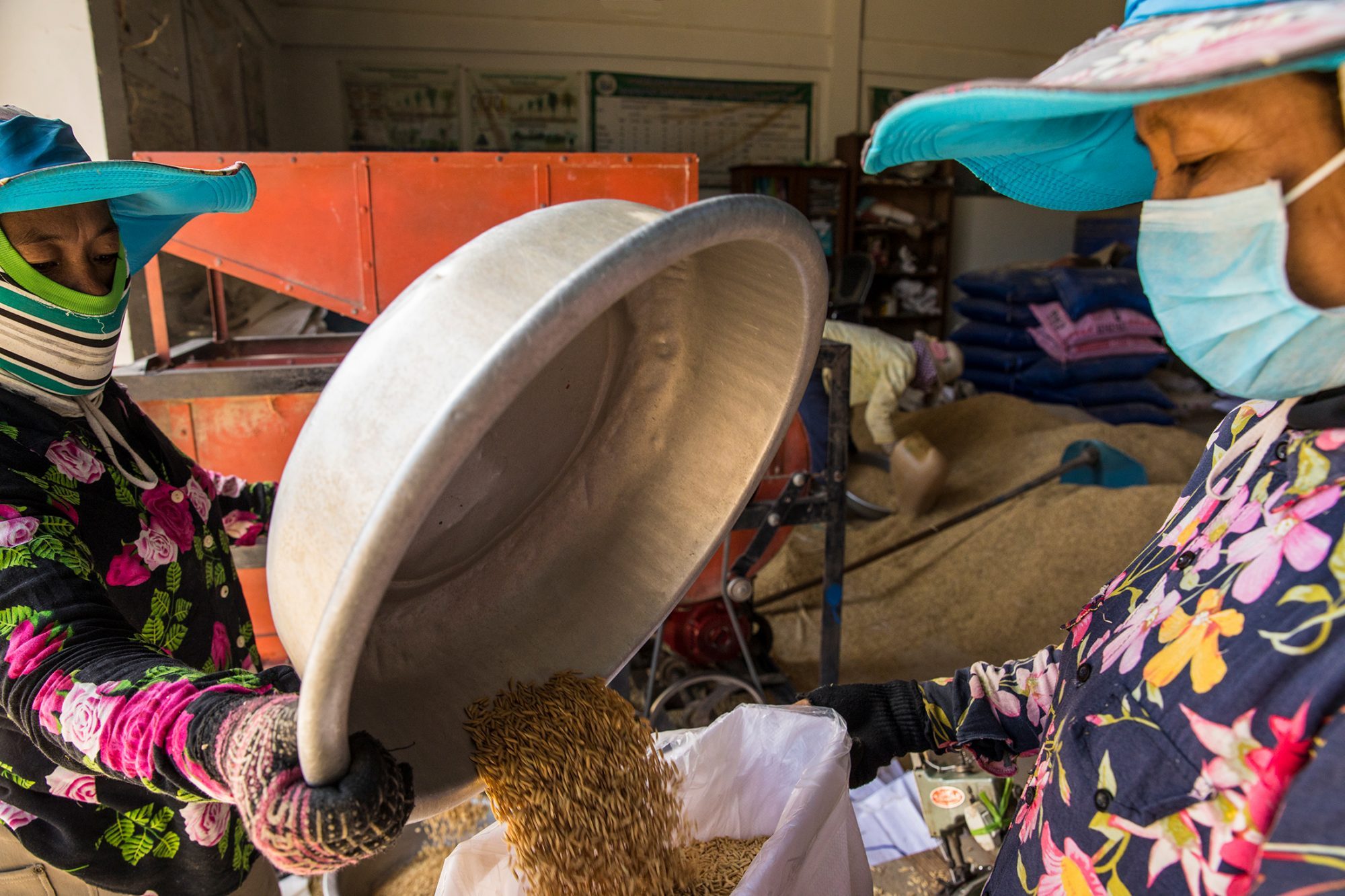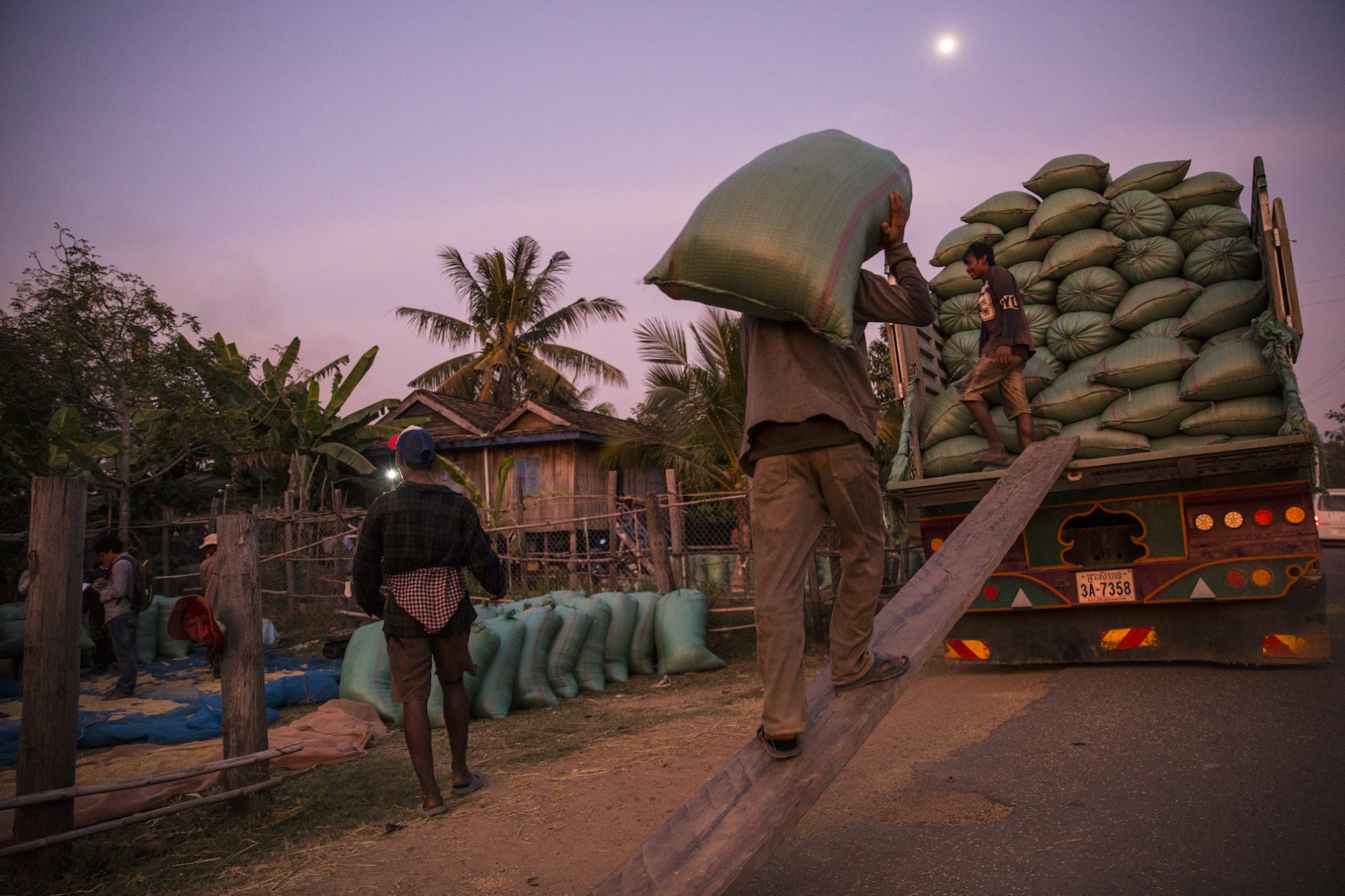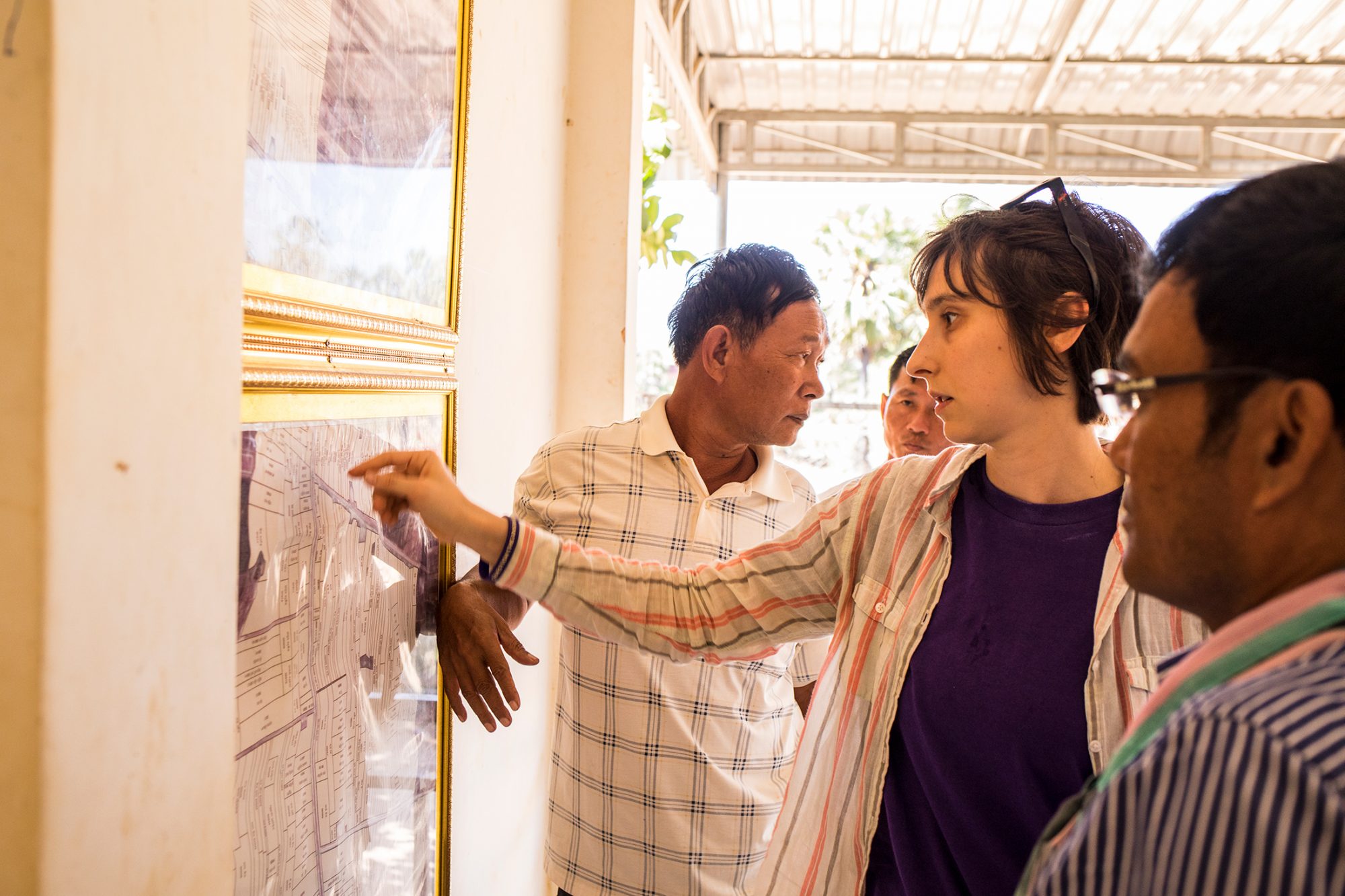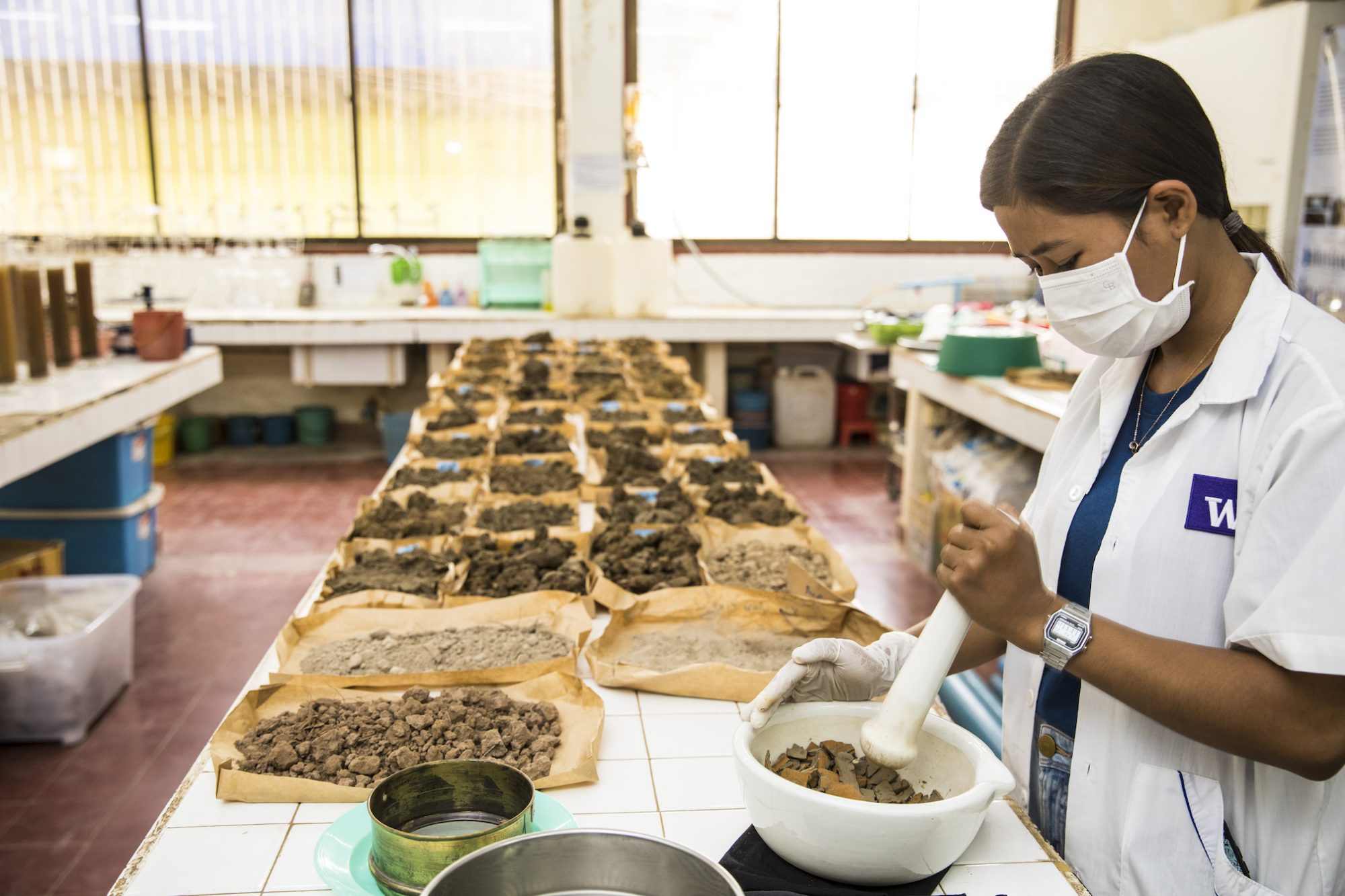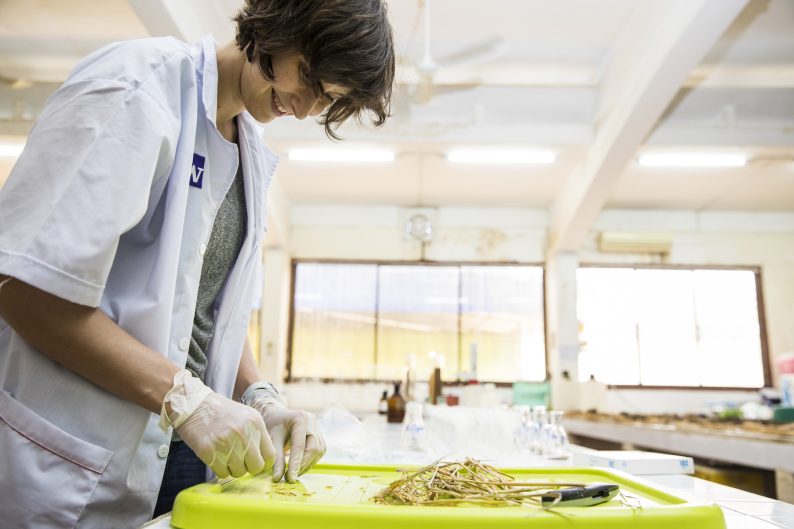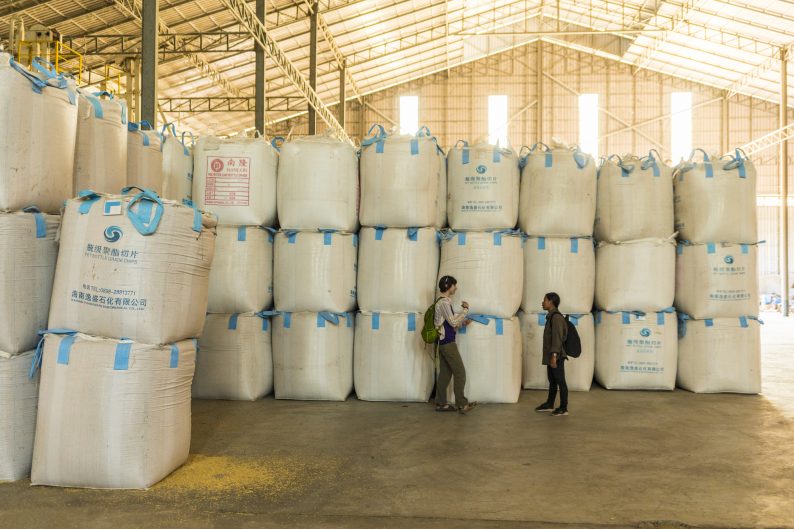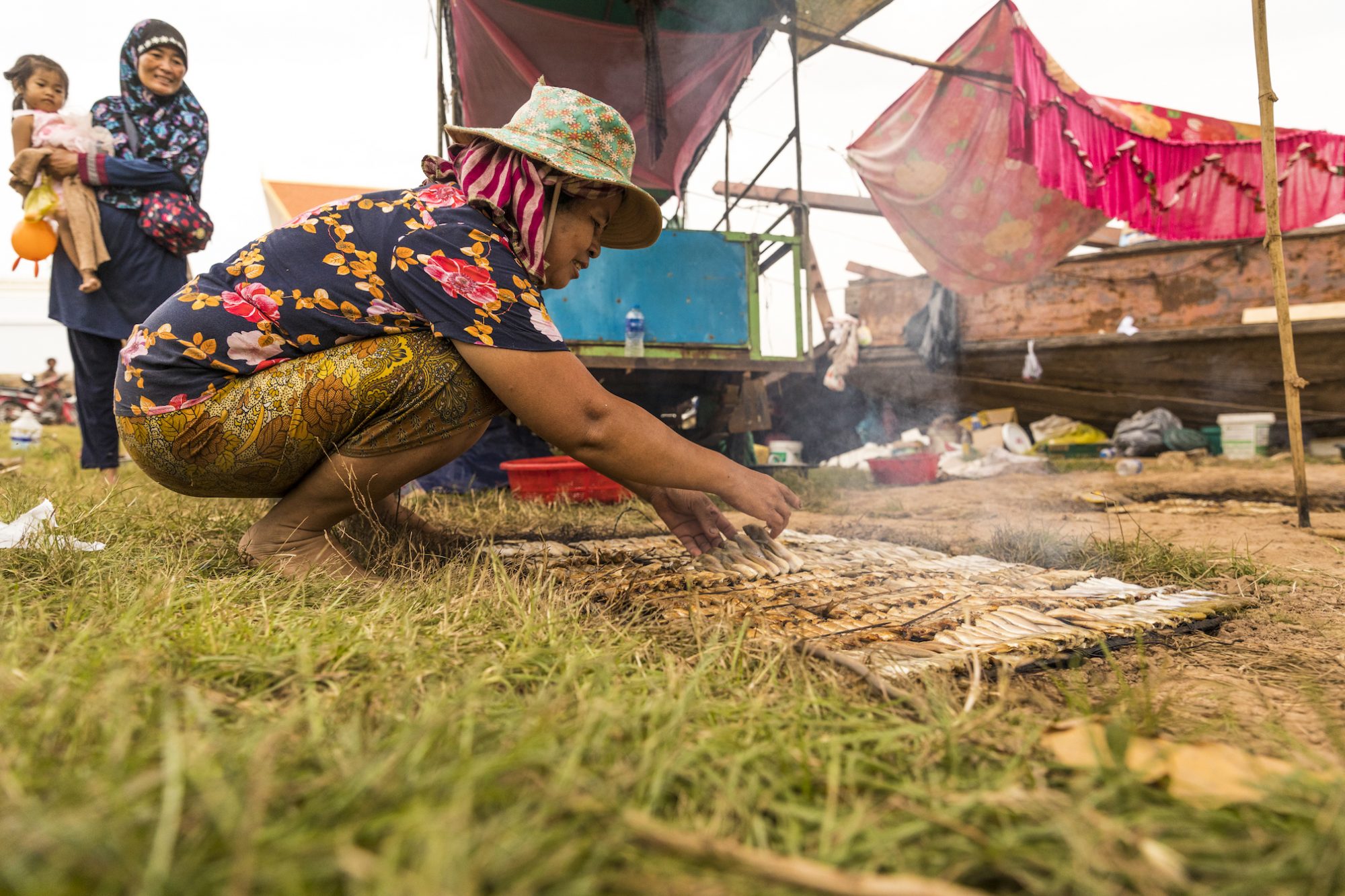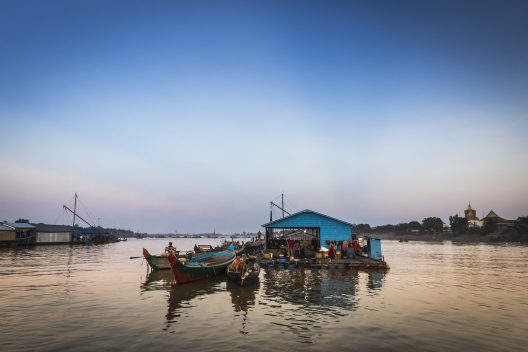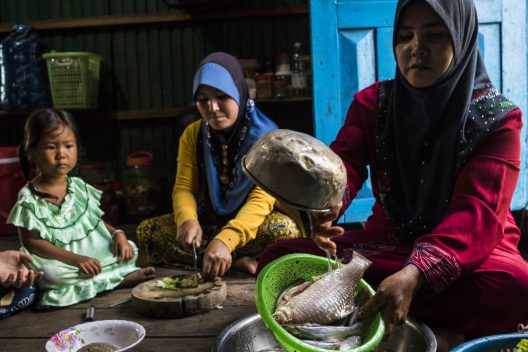
As the outside light fades on the outskirts of Phnom Penh, the flame of a small cookstove grows brighter. With help from her daughters, Sen Mary is cooking rice and freshly caught fish for the Math family’s dinner. While local food is plentiful for now, drastic change may be on the horizon.
“When I was 12, I caught a lot of fish, but now there are not as many. There may be no more fish in the future, depending on the current situation,” says Sen Mary’s son-in-law, Nan Sab Yi, who works as a fisherman to support the family. “We depend on fish and the river. If we don’t have that, we have nothing.”
The Tonle Sap, where Nan Sab Yi catches roughly 110 pounds of fish per day, is on the brink of radical transformation. A freshwater lake with an attached river, the Tonle Sap winds through the eastern part of Phnom Penh. The largest lake in Southeast Asia, it boasts a large volume of fish and is a tributary of the mighty Mekong River, which crosses five countries before reaching Cambodia.
Tonle Sap and Mekong Rivers
use arrows to advance
- Cambodia’s dry season runs from October to April, when the dusty northeast monsoon arrives.
- The southwest monsoon which blows from May to October brings water down the Mekong river.
- The floodwaters reverse the direction of the Tonle Sap river and water fills the Tonle Sap lake.
- Fish breed and grow in the flooded lake and when the flood subsides, migrate downstream and out of the Tonle Sap. The lines indicate where much of the large fishing operations take place.
With a handful of new hydropower dams completed — and more than 135 either under construction or forthcoming — the Mekong’s waterways will soon be altered dramatically. For Cambodians, who consume the most freshwater fish in the world and get up to 70 percent of their daily calorie intake from rice, this change may be devastating.
“Since the dams have been built, the amount of fish is decreasing,” says Nan Sab Yi. “Normally the river starts to rise up between June and July, and the fishing is good. Now the water is not high enough.”
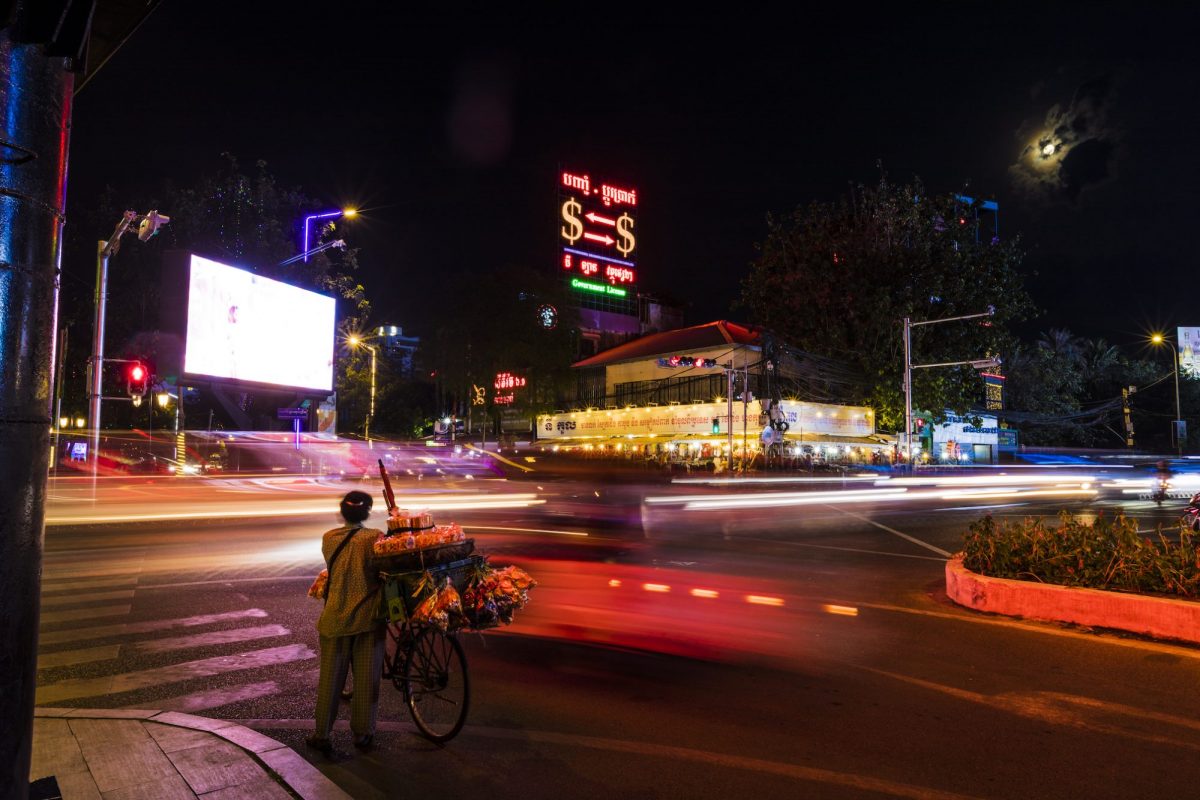
With its location downstream from countries that are stakeholders in the hydropower business, Cambodia is especially vulnerable. Although hydropower development will bring low-cost, renewable electricity to its villages, the majority will be sold to countries up north. While receiving few of the benefits, the rural people of Cambodia will be among the most impacted by dam development.
With support from a National Science Foundation grant, UW researchers from the College of the Environment, College of Engineering and School of Public Health are racing to discover how changes to the Mekong will impact the future of fish and rice— and, ultimately, the Cambodian people.
